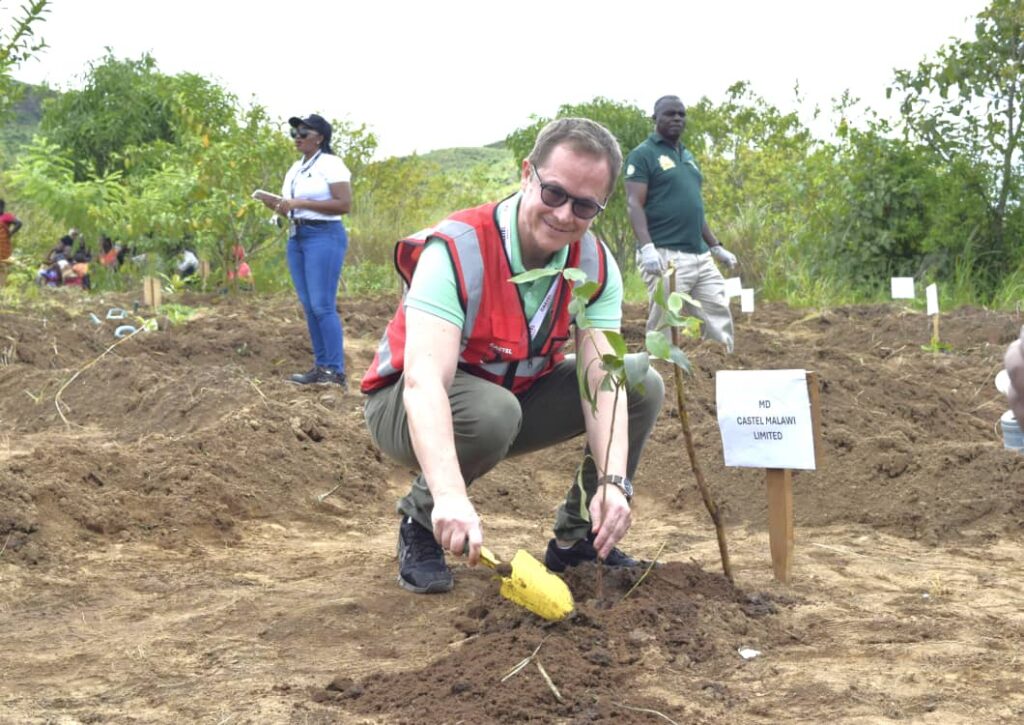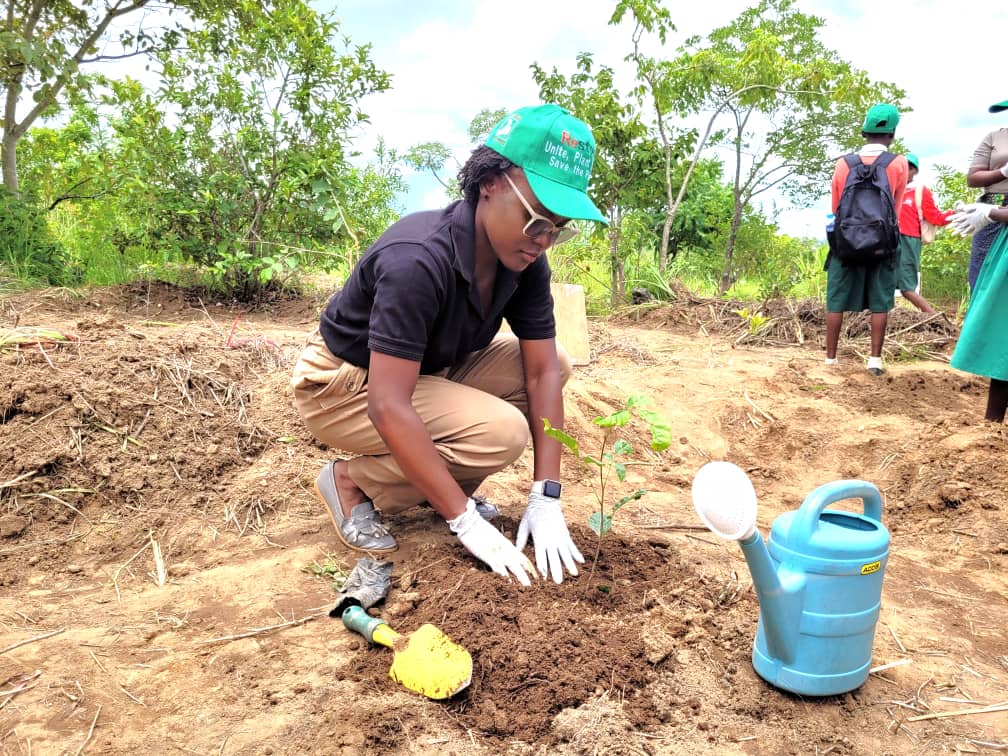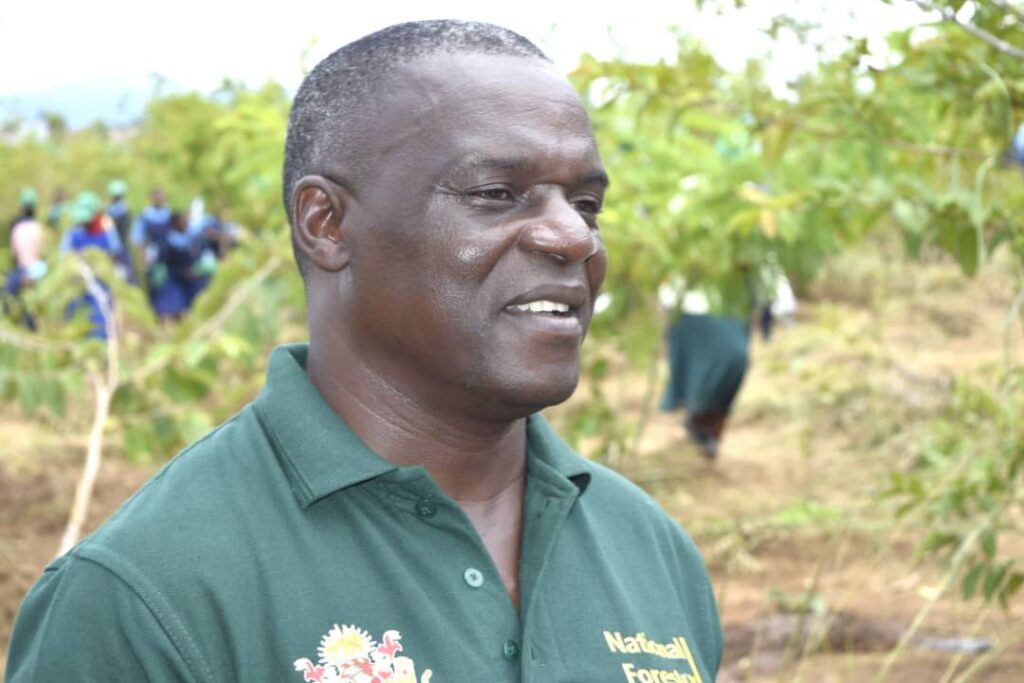
Castel Malawi Limited has reaffirmed its commitment to environmental conservation by replacing 2,500 trees as part of its ongoing tree restoration initiative at Mudi catchment area in Ndirande Township in Blantyre.
This effort is part of the company’s broader reforestation program, which has planted 16,000 and aims to restore and manage critical water catchment areas across Malawi in Mudi Catchment area in Blantyre, Area 33 near Lilongwe bridge, and at Kaning’ina Forest in Mzuzu since 2022.
Speaking on the initiative, Castel Malawi Corporate Social Responsibility Manager Linda Kolomba, emphasized the company’s dedication to sustainable reforestation and environmental stewardship.

“As one of Malawi’s largest water users and a key industrial player, Castel Malawi Ltd recognizes its responsibility in mitigating environmental degradation. We have adopted two forests in designated water catchment areas and pledged to care for them over five years.”
“When we are planting trees, we engage the community, the students, and local residents. Even in after-care activities like weeding and fire breaks, we work with the community. This ensures they earn something for their daily lives while also preserving the environment. It’s a way of giving back to our stakeholders—ensuring the people around us continue to access clean water,” said Kolomba.
Ministry of Forestry’s Southern Region Zone Forest Manager William Mitembe acknowledged Castel Malawi’s vital role in reforestation.

“As government, we appreciate it when companies support us in restoring forests. What Castel Malawi is doing at Mudi Catchment Area is commendable. While Blantyre Water Board is the management authority, several stakeholders, including Castel Malawi, are contributing significantly to its restoration,” said Mitembe.
The company has gone beyond just planting trees by ensuring extensive after-care work, such as weeding, fire break construction, and replanting trees that did not survive.
The long-term goal is to ensure 100% survival of the planted trees, transforming these areas into fully restored forests.

